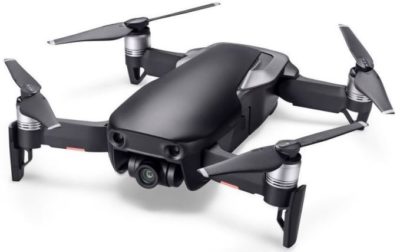brett8883
Well-Known Member
Stock motors have inadequate low rpm torque to accommodate larger pitched propulse.
Its like putting on huge racing slicks on a stock pancake motor vw beetle 1600cc?
Right! Exactly!
Stock motors have inadequate low rpm torque to accommodate larger pitched propulse.
Its like putting on huge racing slicks on a stock pancake motor vw beetle 1600cc?
Stock motors have inadequate low rpm torque to accommodate larger pitched propulse.
Its like putting on huge racing slicks on a stock pancake motor vw beetle 1600cc?
You exclude the noninstantaneous delivery of inrush current to the armature fields that desire uninhibited inflow. Do they even resort to angular momentum perks such as flywheel mass? Realworld inrush current has limitation owing to materials
Incidently, tesla uses gear train reduction to ease strains on motor? Mavic air does not feature propulsion gear train reduction to ease motor strain.
Hover stability without GPS will depend on a recognizable pattern on the floor. It needs to 'see' something unique to fix on before it can try to keep stable. Adequate lighting is also required.Got it. So why was mavic air inching then recovering in pure neutrality flying in none gps,...
Understood.If you don't have GPS operational, then the Mavic is going to find it difficult to 'know' where its stable position is ... If you are flying without GPS assist, then you need to be flying on stock-standard DJI prop's - so that when you are flying ATTI, you can fly predictably - Or - you need to have set up the Master Airscrew prop's so that the Gain is correct so that they will act like normal DJI prop's when the Mavic goes ATTI.

 www.dronezon.com
www.dronezon.com
Not neccesarily so ... You are making an assumption that the current is higher - why? If the Mavic Air has a longer flight duration on the MAS prop's, then the laws of physics say that the motors must be drawing less current (i.e. taking less power) ... If the motors were having to work harder, then under all laws known to electronics, your flights would be shorter.so... thinking out loud... if the props spin at a lower RPM, (Due to more pitch?).. the current is higher so the motors and ESC have more heat to reject.... anyone ever feel the temp of their motors after a flight?
More out loud thinking..... the system has mapped a change in prop rpm to expected response....
a 50 rpm change on a prop that hovers at 5000 rpms will likely create a different response than a 50 rpm change on a 4000 rpm prop.... (Prolly it is rate of RPM change that is important here...)
So not unexpected a lower RPM prop requires a lower rate change to achieve the same aircraft response....
We use essential cookies to make this site work, and optional cookies to enhance your experience.


